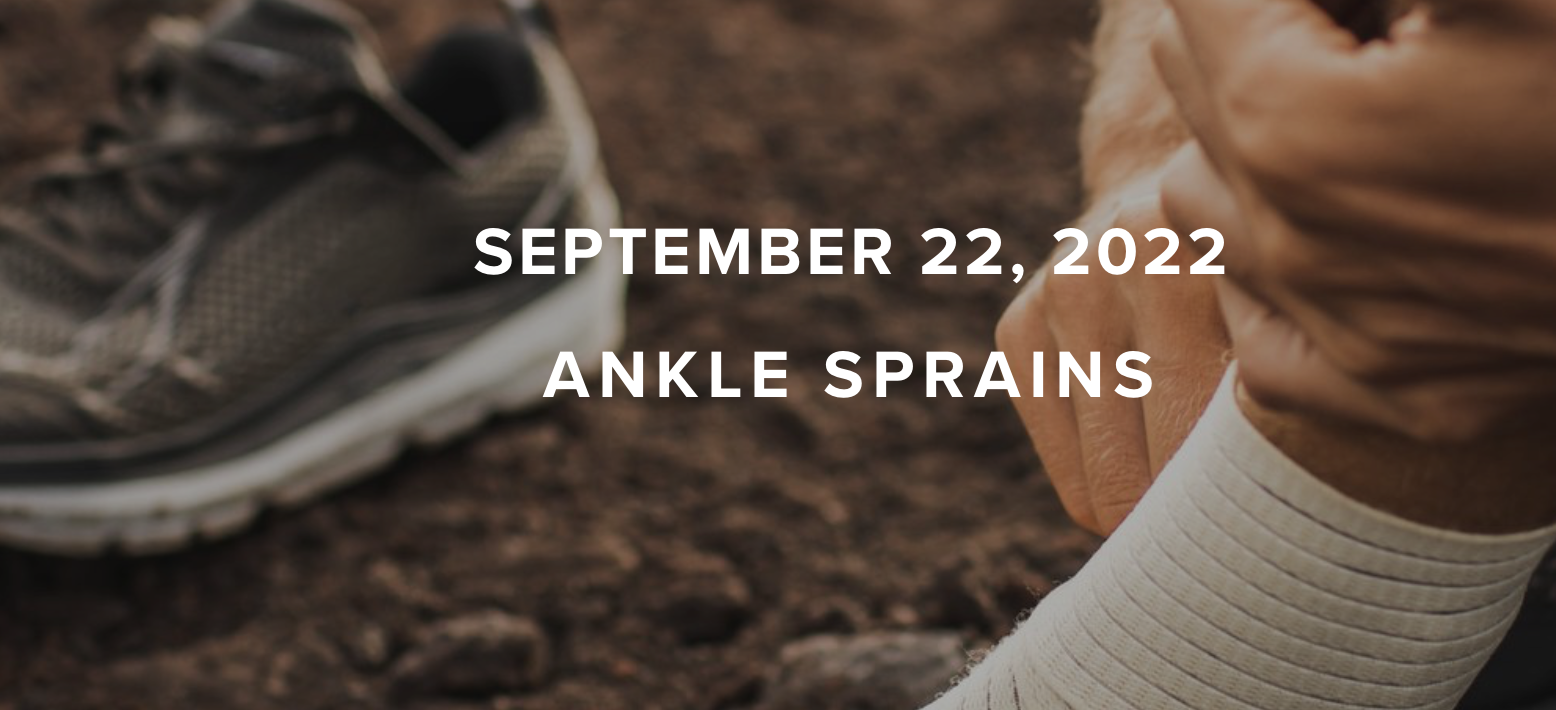The Ankle
The ankle joint is formed where the foot and the leg meet. The ankle, or talocrural joint, is a synovial hinge joint that connects the ends of the tibia and fibula (shin bones) in the lower limb with the proximal end of the talus bone in the foot. The joint between the tibia and the talus bears the vast majority of the body's weight while the fibula keeps the talus under the tibia.
The term "ankle" is used to describe structures in the region of the ankle joint proper. The joint under the ankle allows side to side movement while the ankle joint proper allows the foot to hinge up and down. Together they allow the foot to move as it were connected to the leg with a ball joint. Listed below are some of the most common pathologies written by our staff and local physicians that we see.
Common Ankle Injuries
Ankle Sprain
Occurs when the ligaments that support the ankle joint are stretched or torn. It usually happens due to a sudden twist, roll, or turn of the ankle, causing pain, swelling, and difficulty walking.
Ankle Fracture
Refers to a break or crack in one or more of the bones that make up the ankle joint. Fractures can occur in the tibia (shinbone), fibula (smaller bone on the outside of the lower leg), or talus (the bone connecting the leg to the foot). Fractures often cause severe pain, swelling, and an inability to bear weight.
Achilles Tendonitis
Inflammation of the Achilles tendon, which connects the calf muscles to the heel bone. It typically occurs due to overuse, repetitive stress, or poor footwear. Symptoms include pain, swelling, and stiffness in the back of the ankle.
Achilles Tendon Rupture
Occurs as a result of a sudden forceful trauma of the calf muscles or from repetitive stress over time. It causes a sudden, sharp pain in the back of the ankle, difficulty walking, and a noticeable gap or indentation above the heel.
High Ankle Sprain
Also known as a syndesmotic sprain, involves injury to the ligaments connecting the tibia and fibula bones above the ankle joint. It typically occurs due to excessive external rotation or forceful twisting of the ankle. High ankle sprains often cause pain, swelling, and instability in the upper ankle area.
Ankle Impingement
When soft tissues or bone structures within the ankle joint get pinched or compressed during movement. It can result from repetitive trauma, previous injuries, or anatomical variations. Symptoms include pain, limited range of motion, and a feeling of catching or locking in the ankle.
Osteochondral Lesion
A defect or injury to the cartilage and underlying bone within the ankle joint. It can occur due to trauma, repetitive stress, or as a result of an ankle sprain. Symptoms include pain, swelling, joint stiffness, and instability.
Ankle Bursitis
Inflammation of the small fluid-filled sacs called bursae, which cushion and reduce friction between tendons, ligaments, and bones. Ankle bursitis often occurs due to repetitive motions, excessive pressure, or direct trauma to the bursae around the ankle, leading to pain, swelling, and warmth in the affected area.
Foot & Ankle WEBINARS
Foot & ankle BLOGS
Authors & Contributors
Benjamin Wobker, PT, MSTP, CSCS
Hork Do, Pt, DPT
Mark Bouma, PT, DPT, OCS, COMT, FAAOMPT, CFI
Katie Hutchins, PT, DPT
Mandie Majerus, PT, MSPT, OCS, CSCS, SFMAc, CMPT, CFSC
Bob Adams, DO, USATF Team Physician 1984-2015
Ghislaine Robert, MD
Jonathan Hall, MD
Lawrence Maurer, DPM
Peter Vicent, DPM
Disclaimer:
This website is an information and education resource for health professionals and individuals with injuries. It is not intended to be a service for patients and should not be regarded as a source of medical or diagnostic determination, or used as a substitute for professional medical instruction or advice. Not all conditions and treatment modalities are described on this website. Any liability (in negligence or otherwise) arising from any third party acting, or refraining from acting, on any information contained on this website is hereby excluded.








